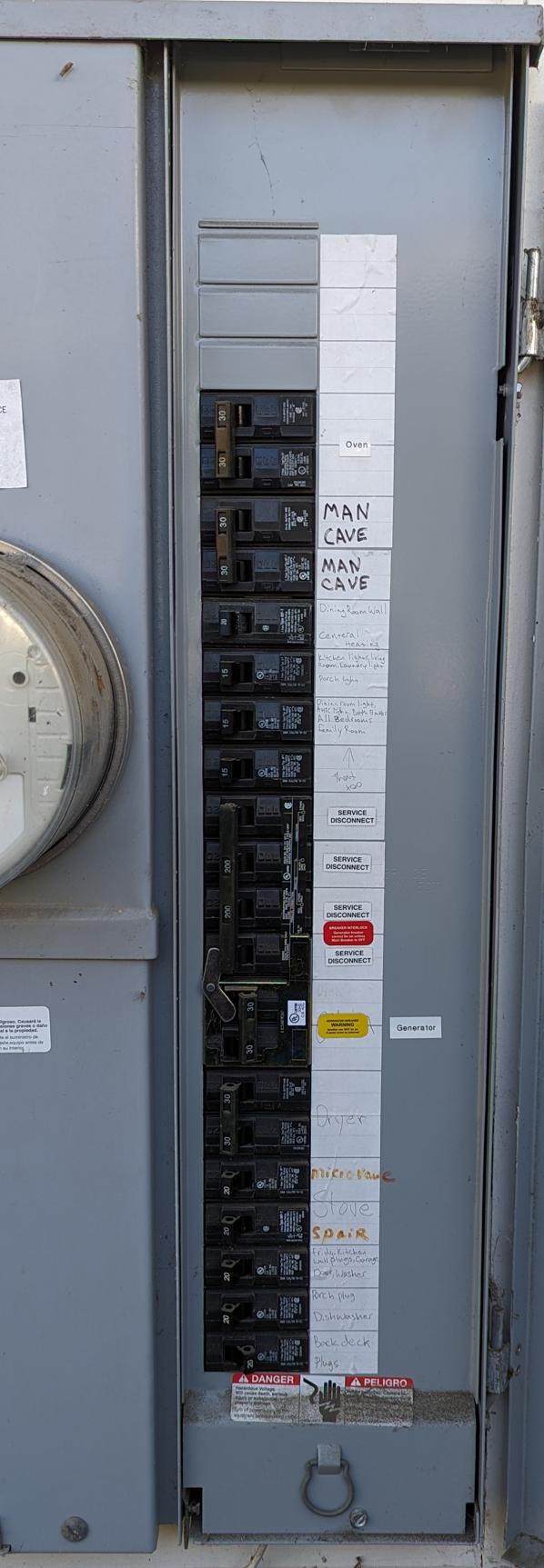My gut feeling is you'll be OK for some amount of EV charging, but not necessarily 60A. You need to do a formal Load Calculation. Since you are going to get an electrician anyway, one option is to assume that you will be able to spare at least 20A for EV charging, and move forward anyway. EVSE (a.k.a., the charger) such as a Tesla Wall Connnector is identical for any range from 20A to 60A, sometimes even higher. The decision of how much power to provision for EVSE only affects two things - how it is configured (switches or some software setting) and the wire size needed.
Load Calculation
As you already know, it is not add up the breakers. And actually if it was add up the breakers, you would not necessarily be in such bad shape, because you have 200A @ 240V but many of your breakers are single breakers at 120V. But that still isn't the way to do it.
So how is it done? By a combination of:
- House size - for general usage/lighting using standard formulas
- Cooking Appliances - This is not as simple as "add up the nameplate ratings" because you actually get a discount of sorts if you have separate electric cooktop and oven
- Required kitchen and bathroom circuits
- HVAC - based on nameplate ratings and various formulas
- Water heater (if electric)
- Other large appliances, with various rules
It gets complicated. But the end result is a single magic number that incorporates typical usage patterns. You subtract that number from your service (200A) and see what is left.
There are some online Load Calculation web pages as well as many printable worksheets and some Excel spreadsheets. Or your electrician can do it (my electrician did one as part of a heavy-up - there was no question about whether I would be OK in 200A, but it had to be done as part of the process).
How Much Do You Need?
For most people, most of the time, 20A to 30A is plenty. Most people are able charge their EV overnight. Most people drive 100 miles or less per day. 8 to 10 hours at 20A is enough to add 100 miles (typical) of range. So if your Load Calculation only allows for 20A (I think you'll be able to do more in this particular case) then it just doesn't matter. You set it up for that and everything will be just fine.
If your Load Calculation allows for 40A, then you have to consider whether to use the full amount available or not. There are two issues:
20A uses 12 AWG wire (standard for lots of circuits). 30A uses 10 AWG wire (standard for clothes dryers, water heaters, a lot of ovens, etc.). 40A needs 8 AWG cable or wire. 50A needs 6 AWG cable or 8 AWG wire. 60A needs 4 AWG cable or 6 AWG wire. Unlike some things, most EVSE requires copper wire (aluminum is much cheaper at large sizes, even though it usually needs a size larger than copper for the same circuit). If it is 20 feet then no big deal. If it is 80 feet then it starts to add up. Not a huge deal, but something to consider.
If you have a Load Calculation of 100A and use 60A for EV charging then you still have 40A for future use. But if you have a Load Calculation of 150A and use all of the remaining 50A for EV charging then you will have a problem if you ever want to add something else - e.g., larger HVAC or larger oven. You would then need to look at either load shedding options (effective but can get expensive to retrofit) or end up reconfiguring the EVSE for a lower maximum charge rate (easy on some, nearly impossible on others).

